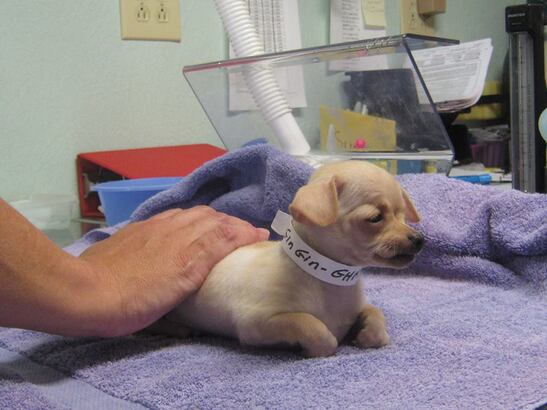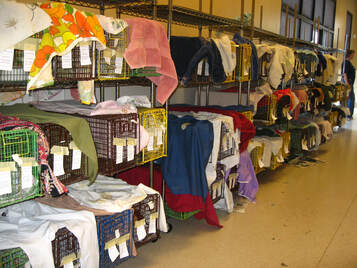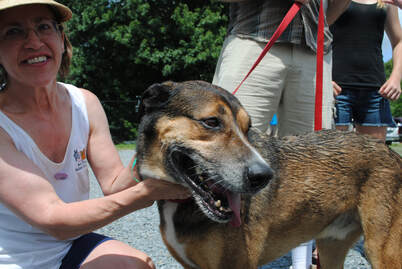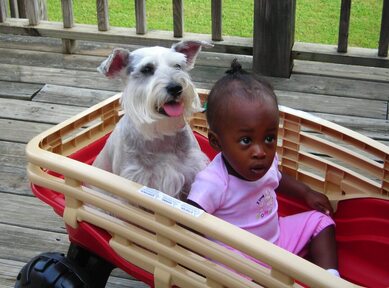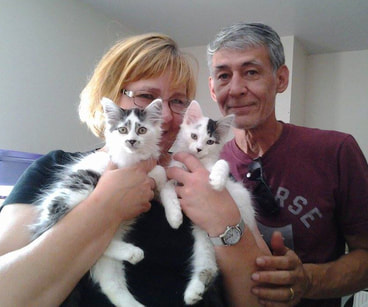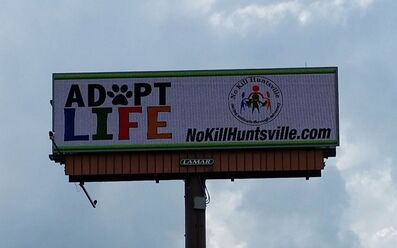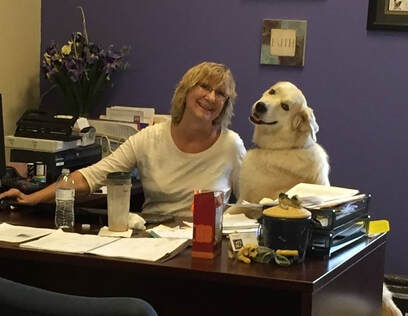The No Kill Equation is the only model proven to end the killing of healthy and treatable shelter animals in every community where it has been fully embraced and comprehensively implemented.
Developed by Nathan Winograd of the No Kill Advocacy Center, the No Kill Equation was first published in Nathan’s ground-breaking book, Redemption: The Myth of Pet Overpopulation and the No Kill Revolution in America. The eleven programs and services necessary to end the needless slaughter of shelter animals is presented as an equation so the model can be easily understood and readily applied to any community.
The No Kill Equation is dual-purpose in nature. It functions to keep animals from entering the shelter in the first place and functions to get those animals who do end up in the shelter out quickly. This means the animal shelter is just that: a shelter, a safety net and a safe haven, a temporary place to house animals until they are returned home or they are re-homed. When intake is reduced and output increased, there are fewer animals in the shelter at any given time so costs are decreased and lives are saved.
The No Kill Advocacy Center explains. . .
Animals enter shelters for a variety of reasons and with a variety of needs, but for over 100 years, the ‘solution’ has been the same: adopt a few and kill the rest. The No Kill Equation provides a humane, life-affirming means of responding to every type of animal entering a shelter, and every type of need those animals might have. Some animals entering shelters are community cats. At traditional shelters, they are killed, but at a No Kill shelter, they are sterilized and released back to their habitats. Some animals entering shelters are motherless puppies and kittens. At traditional shelters, these animals are killed as well. At a No Kill shelter, they are sent into a foster home to provide around-the-clock care until they are eating on their own and old enough to be adopted. Some animals have medical or behavior issues. At a traditional shelter, they are killed. At a No Kill shelter, they are provided with rehabilitative care and then adopted. Whatever the situation, the No Kill Equation provides a lifesaving alternative that replaces killing.
Developed by Nathan Winograd of the No Kill Advocacy Center, the No Kill Equation was first published in Nathan’s ground-breaking book, Redemption: The Myth of Pet Overpopulation and the No Kill Revolution in America. The eleven programs and services necessary to end the needless slaughter of shelter animals is presented as an equation so the model can be easily understood and readily applied to any community.
The No Kill Equation is dual-purpose in nature. It functions to keep animals from entering the shelter in the first place and functions to get those animals who do end up in the shelter out quickly. This means the animal shelter is just that: a shelter, a safety net and a safe haven, a temporary place to house animals until they are returned home or they are re-homed. When intake is reduced and output increased, there are fewer animals in the shelter at any given time so costs are decreased and lives are saved.
The No Kill Advocacy Center explains. . .
Animals enter shelters for a variety of reasons and with a variety of needs, but for over 100 years, the ‘solution’ has been the same: adopt a few and kill the rest. The No Kill Equation provides a humane, life-affirming means of responding to every type of animal entering a shelter, and every type of need those animals might have. Some animals entering shelters are community cats. At traditional shelters, they are killed, but at a No Kill shelter, they are sterilized and released back to their habitats. Some animals entering shelters are motherless puppies and kittens. At traditional shelters, these animals are killed as well. At a No Kill shelter, they are sent into a foster home to provide around-the-clock care until they are eating on their own and old enough to be adopted. Some animals have medical or behavior issues. At a traditional shelter, they are killed. At a No Kill shelter, they are provided with rehabilitative care and then adopted. Whatever the situation, the No Kill Equation provides a lifesaving alternative that replaces killing.
|
The Eleven Programs and Services of the No Kill Equation:
1) High Volume/Low Cost Spay Neuter programs make it easy for people to have pets sterilized at a reasonable cost which reduces pet populations in the community. Reduced pet populations means fewer animals enter shelters and fewer tax dollars are spent to care for those animals. Some municipalities invest in spay/neuter programs for low income residents because doing so saves money in the long run.
|
|
2) Community Cat Trap-Neuter-Return (TNR) Programs serve to reduce the population of free roaming cats present in almost every community. Cats are trapped, vaccinated, sterilized and their left ear is "tipped" so they can be easily identified. It is more cost-effective to do TNR (or even SNR which means Shelter-Neuter-Return) than it is to catch and then kill cats. You can learn more about TNR & SNR at Alley Cat Allies.
|
|
3) Pet Retention Programs serve to keep pets in existing homes and out of animal shelters where tax dollars are spent on those animals. This consists primarily of counseling to find alternatives to having pets surrendered to shelters. It also includes referring people to resources and programs such as pet food pantries, training, and low cost veterinary care so people can keep their pets where they belong - with the people who love them.
|
|
4) Proactive Redemption Programs is another way to say "return to owner" programs. These are steps taken by animal control personnel in the field to get pets back home so they either don't go to shelter at all or to they are in shelters for the least amount of time possible. This can also include programs to provide free or low cost microchipping to pet caregivers so animals are easily identified and can be reunited with families quickly.
|
|
5) Comprehensive Adoption Programs make it easy for people to adopt shelter animals. This includes having family friendly hours so people can get to shelters to meet and adopt an animal. It also includes offering fee-waived programs like Pets for Vets or Seniors for Seniors as well as having regular specials and promotions to help place animals who have been in the shelter longer than other animals. Adoptions are vital to an agency’s lifesaving mission. The quantity and quality of shelter adoptions is in shelter management’s hands, making lifesaving a direct function of shelter policies and practice. If shelters better promoted their animals and had adoption programs responsive to community needs, including public access hours for working people, offsite adoptions, adoption incentives, and effective marketing, they could increase the number of homes available and replace killing with adoptions. Contrary to conventional wisdom, shelters can adopt their way out of killing.
|
|
6) Foster Programs place animals in temporary homes to free up space in shelters and to reduce the stress on animals until they find a new home. Fostering is a wonderful way for people to help save the lives of animals without making a long-term commitment. Foster families provide needed socialization, house training and are also a source of information about pets' personalities; how well they get along with kids and other animals. Foster care is a low-cost, and often no-cost way of increasing a shelter’s capacity, caring for sick, injured or behaviorally challenged animals, and thus saving more lives.
|
|
7) Medical and Behavioral Programs are focused on keeping shelter animals healthy and happy, and moving them efficiently through the system and into new homes. Shelters must put in place comprehensive vaccination, handling, cleaning, socialization, and care policies before animals get sick, and rehabilitative efforts for those who come in sick, injured, unweaned, or traumatized, helping them overcome medical and behavioral issues so they can be placed in new homes. This also includes comprehensive enrichment programs to keep animals happy in the shelter environment.
|
|
8) Rescue Group Relationships serve to keep animals moving through the shelter system by transferring them to rescue groups who can provide them with the care they need and also learn more about their personalities before placing them in permanent homes. In progressive communities, all qualified rescue groups are welcomed to place pets with special needs, seniors, or those who need socialization or behavioral support and training. Adoption or transfer to a rescue group frees up cage and kennel space, reduces expenses for feeding, cleaning, and killing, and improves a community’s rate of lifesaving. Because millions of dogs and cats are killed in shelters annually, rare is the circumstance in which a rescue group should be denied an animal.
|
|
9) Volunteer Programs are vital to any animal shelter. There are never enough staff members. Volunteers perform a variety of tasks which are only limited the bounds of imagination. They can help with enrichment programs inside the shelter, help at special adoption events, can help with grooming, photography or marketing tasks, and can do so on their own terms with the amount of time they have available. Volunteers are a dedicated “army of compassion” and the backbone of a successful No Kill effort. There are always more needs than paid human resources. That is why volunteers make the difference between success and failure and, for the animals, life and death.
|
|
10) Community Involvement / Public Relations Programs aimed at increasing adoptions, maximizing donations, recruiting volunteers and partnering with community agencies comes down to increasing the shelter’s public exposure. And that means consistent marketing and public relations. Public relations and marketing are the foundation of a shelter’s activities and success.
|
|
11) Compassionate Leadership is the final element of the No Kill Equation and the most important of all, without which all other elements of the Equation will be ineffective. It is vital to have the people who oversee and manage the shelter operation committed to the mission of lifesaving, and it begins with a hard working, compassionate shelter director not content to continue killing, while regurgitating tired clichés about “public irresponsibility” or hiding behind the myth of “too many animals, not enough homes.” Those communities which have the most lifesaving success are those with the most compassionate leaders who bring out the best in the communities they serve.
|
A final note on the key to a successful shelter. . .
|
From the No Kill Advocacy Center. . .
While shelter leadership drives the No Kill initiative, it is the community that extends the safety net of care. Unlike traditional shelters—which view members of the public as adversaries and refuse to partner with them as rescuers or volunteers—a No Kill shelter embraces the people in its community. They are the key to success: they volunteer, foster, socialize animals, staff offsite adoption venues and open their hearts, homes and wallets to the animals in need. The public is at the center of every successful No Kill shelter in the nation. By working with people, implementing lifesaving programs and treating each life as precious, a shelter can transform itself.
While shelter leadership drives the No Kill initiative, it is the community that extends the safety net of care. Unlike traditional shelters—which view members of the public as adversaries and refuse to partner with them as rescuers or volunteers—a No Kill shelter embraces the people in its community. They are the key to success: they volunteer, foster, socialize animals, staff offsite adoption venues and open their hearts, homes and wallets to the animals in need. The public is at the center of every successful No Kill shelter in the nation. By working with people, implementing lifesaving programs and treating each life as precious, a shelter can transform itself.
[Images on this page are courtesy of the North Alabama Spay & Neuter Clinic, Wendy Yada, Purrs and Paws of Aras, Becky Lyn Tegze, Delores Francois, Dr. Kim West, National Mill Dog Rescue and Cheryl Schneider]
